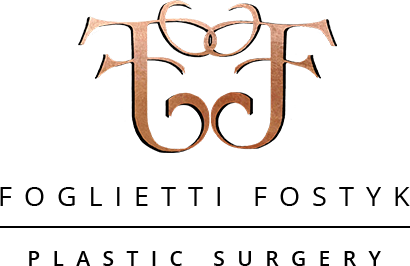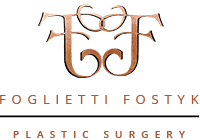
Pregnancy and breastfeeding alter the breast tissues in many ways. Some mothers may have dramatic changes, while others have subtle differences, such as asymmetrical breasts, more pronounced nipples, and a deflated or drooping breast appearance. Many women struggle with their breast size and shape when they’re finished nursing their last baby, and breast surgery at Foglietti Fostyk Plastic Surgery in Beachwood can restore that lost volume and perkiness.
The Effects of Hormones and Lactation on Breast Tissue
Pregnancy hormones, including estrogen, prolactin, and progesterone, cause breast tissue changes in preparation for lactation. Blood flow increases, milk ducts expand, and veins become more prominent under the breast skin. Breast tissue loosens and stretches to accommodate milk flow and may cause stretch marks from the sudden growth.
When a woman’s milk comes in after childbirth, the breasts can expand up to three times their previous size. Lactation strains the breast skin as the milk ducts fill with milk, creating fuller breasts. After weaning, the breasts decrease, and the once full, stretched breasts are now deflated with loose skin and elongated nipples.
Age, weight gain, original breast size, genetics, and previous pregnancies can dictate how your breasts adapt after breastfeeding. However, many women experience larger, smaller, deflated, or sagging breasts after breastfeeding.
If it’s been at least six months since you stopped lactating, schedule a consultation with our board-certified plastic surgeons to discuss your breast surgery options and restore your pre-pregnancy bust.
Breast Augmentation After Breastfeeding
Women often experience a loss of volume after breastfeeding, which may make the breasts appear pancake shaped. The denser tissues during lactation are replaced with softer tissues that look stretched out and empty, especially in the upper portion of the breasts. Breast augmentation increases breast size and improves the shape to correct a deflated appearance, uneven breasts, or misshapen breasts. This breast surgery adds fullness, volume, and cleavage using saline or silicone breast implants. Drs. Foglietti and Fostyk may recommend combining breast augmentation with breast lift for the best results.
Breast Lift After Breastfeeding
After weaning, breast lift (mastopexy) is often necessary because the breasts and nipples hang below the inframammary fold or breast crease. The mastopexy technique depends on the extent of breast sagging. Mild sagging can typically be improved with the donut breast lift, while moderate and severe sagging requires more extensive breast reshaping with the lollipop or anchor techniques.
Breast Reduction After Breastfeeding
The larger breast size brought on by lactation may not decrease when breastfeeding stops. Some women may develop symptoms associated with overly large breasts (macromastia) that overpower their physique. Top-heavy women may experience neck, back, and shoulder pain, divots in their shoulders from bra straps, skin chafing or irritation under and between the breasts, and difficulty exercising due to their breast size. Breast reduction can decrease breast size for a more proportionate body shape and symptom relief.
August is National Breastfeeding Month, and our board-certified plastic surgeons are available to help you realize your goals for your breasts after the sacrifices of motherhood. Contact Foglietti Fostyk Plastic Surgery in Beachwood, Ohio, at (216) 292-6800.


